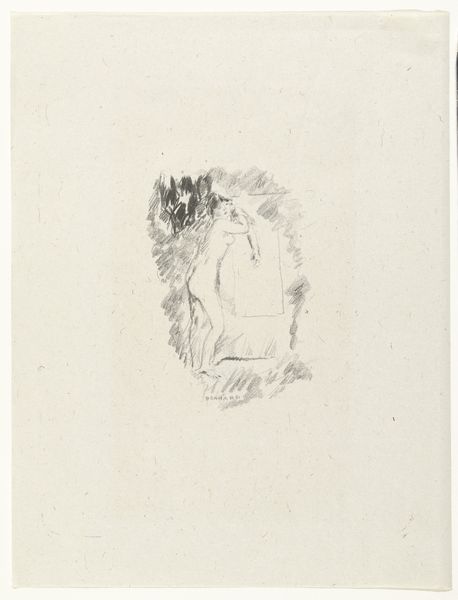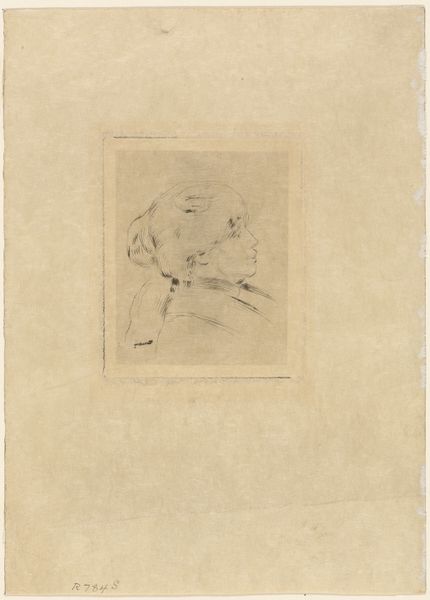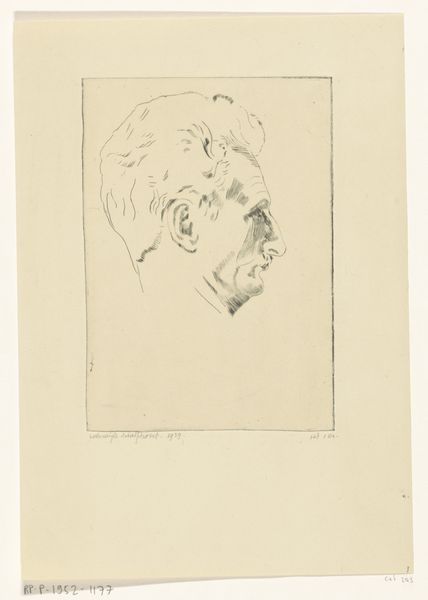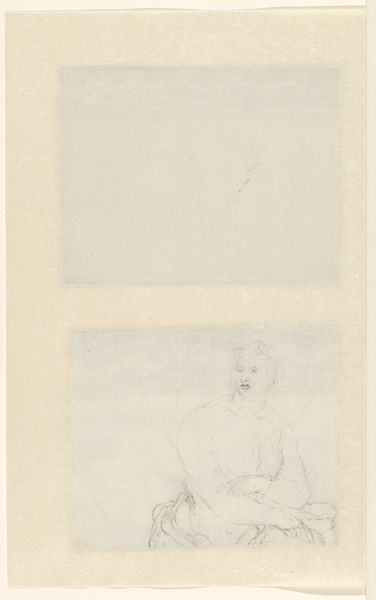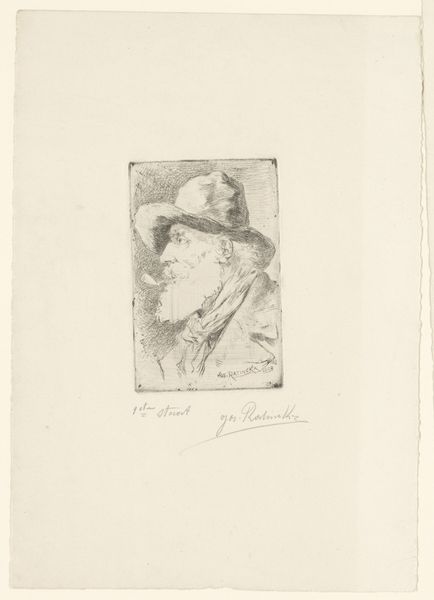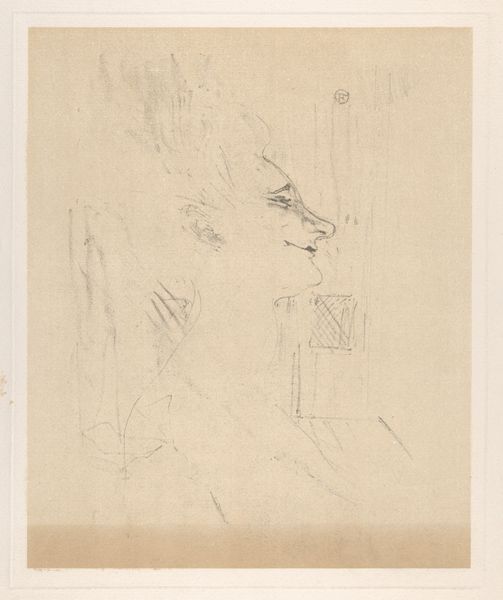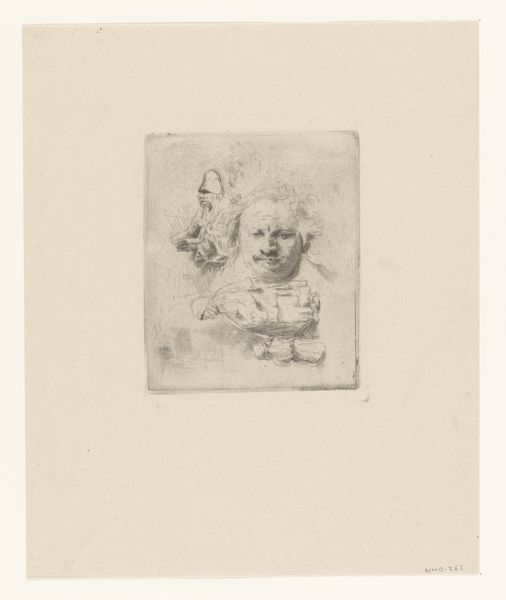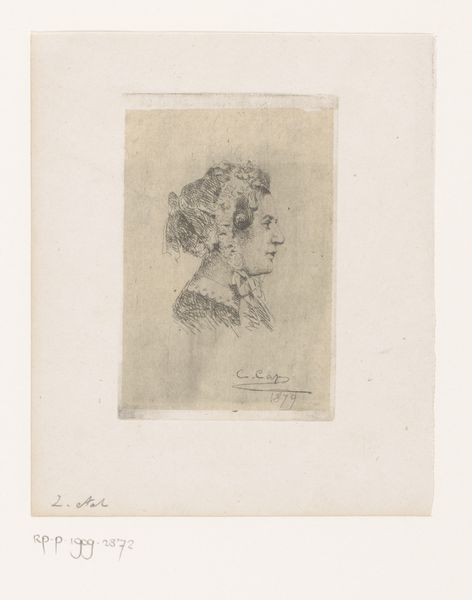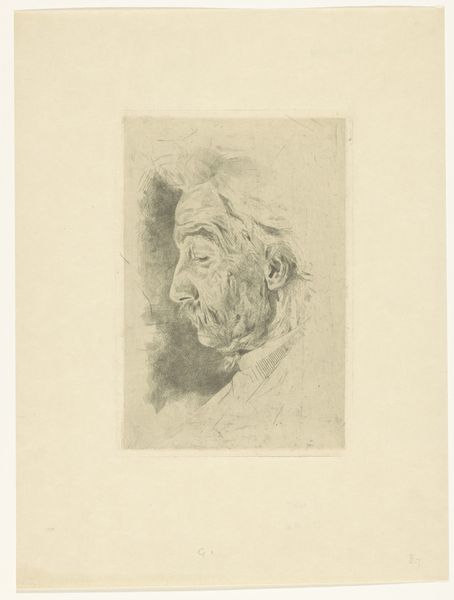
drawing, pencil
#
portrait
#
pencil drawn
#
drawing
#
self-portrait
#
pencil sketch
#
pencil drawing
#
pencil
#
line
#
pencil work
#
academic-art
#
realism
Dimensions: height 80 mm, width 58 mm
Copyright: Rijks Museum: Open Domain
Curator: Here we have "Jongenskop, schets," a pencil drawing by Carl Bloch, created sometime between 1880 and 1885. It presents as a contemplative study, or sketch of a young man. What are your initial impressions? Editor: Haunting. The gaze is so direct, almost unnerving, especially given the ethereal quality of the pencil work. It feels like peering into someone's memory rather than observing a posed portrait. Curator: That sensation is partly driven by the material choices, isn't it? Pencil, with its inherent association to preparatory sketches, provides a direct view into Bloch’s working process. The seeming transience clashes wonderfully with the conventional art history. Editor: Exactly! You feel like you’re intruding on a private moment. I love the artist’s almost hesitant approach to defining form; it gives the impression that he wants the sketch to convey the sitter’s state of mind, but he wants the viewer to work a bit in accessing that deeper sense of feeling. Almost as if one’s imagination becomes an unspoken contribution to this experience of ‘being there’. Curator: Precisely. Think about the societal value attached to drawing as a foundational skill, its relationship to craft guilds, apprenticeship… and how Bloch, in elevating this 'humble' medium to portraiture, democratizes access to both the creation and reception of art. Editor: It’s fascinating to consider drawing—specifically pencil work—within this context. The labor required versus, say, oil paint lends this sense of honesty and simplicity. Even just now it reminds me so much of the preliminary sketches I scribbled as a kid! You feel closer, right? Curator: Indeed! Consider that portraiture was once almost exclusively the domain of the wealthy elite. So what is to be made of the mass distribution of printed material, affordable pencil drawing materials and accessible art-making processes within the rise of realism? I’d argue that Carl Bloch created a portrait, not just of a boy, but a moment where the old guard was meeting the next generation… Editor: I totally see what you mean… Maybe that’s why there’s so much ambiguity! That nervous uncertainty of a boy facing his own unknown potential! Thanks, I hadn’t thought of it that way before.
Comments
No comments
Be the first to comment and join the conversation on the ultimate creative platform.
